Product
Firmness
Score
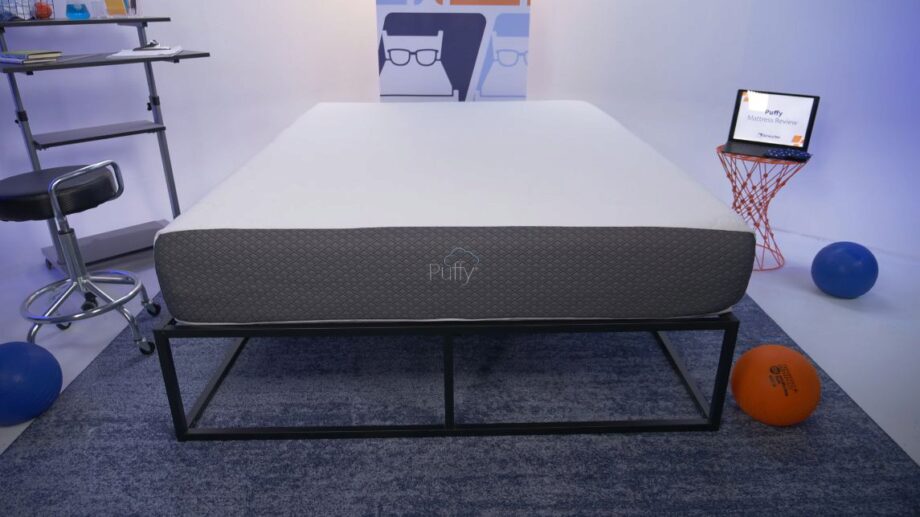
Disclosure: By clicking on the product links in this article, Mattress Nerd may receive a commission fee at no cost to you, the reader. Read full disclosure statement.
The Puffy is better for most side sleepers, lightweight folks, and anyone who wants to sink into their bed. The Lull’s firmer surface better supports the spines of back sleepers and delivers superior support for sleepers with back pain. Both beds excel at motion isolation, making each a good choice for couples who share a bed.
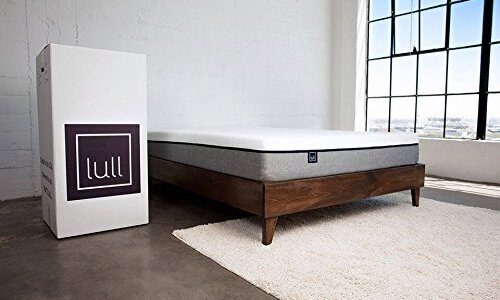

| Lull is best for… | Puffy is best for… |
| Back sleepers | Those with lightweight (<130 lbs) and average-weight (130–230 lbs) body types |
| Indecisive shoppers | People with joint pain |
| People who share the bed | Memory foam mattress lovers |
The Puffy is a memory foam mattress that contours to the body for excellent pressure relief. The Lull is a slightly firmer all-foam bed that comes with a generous sleep trial.
At Mattress Nerd, we measure firmness on a 1–10 firmness scale. One is cotton soft, while 10 is as firm as sleeping directly on the floor. Most mattresses fall between 4/10 and 8/10. The Puffy’s firmness level is 6/10 and the Lull’s is 7/10. As such, these are both medium-firm mattresses, which is a firmness that works well for the average sleeper.
Both the Puffy and Lull provide outstanding motion isolation, which means they’re good mattresses for couples who want better sleep. While both excel in this category, the Puffy slightly outperforms the Lull, thanks to two layers of motion-absorbing memory foam compared to the Lull’s single layer.
The Puffy’s thick memory foam layers cushion pressure points and deliver conforming support. The feel works well for lightweight or average-weight side and back sleepers. If you weigh more, you may find yourself sinking too far into the mattress, regardless of your sleeping position. The Lull’s top layer is noticeably firmer, which works best for lightweight stomach sleepers and average-weight back and side sleepers.
Lull Performance By Body Type & Sleeping Position:
| Body Type: | BACK SLEEPERS | STOMACH SLEEPERS | SIDE SLEEPERS |
| Lightweight (< 130 lbs): | 5 | 3 | 3 |
| Average-weight (130–230 lbs): | 5 | 3 | 4 |
| Heavyweight (> 230 lbs): | 3 | 2 | 4 |
Puffy Performance By Body Type & Sleeping Position:
| Body Type: | BACK SLEEPERS | STOMACH SLEEPERS | SIDE SLEEPERS |
| Lightweight (< 130 lbs): | 4 | 3 | 5 |
| Average-weight (130–230 lbs): | 3 | 3 | 4 |
| Heavyweight (> 230 lbs): | 2 | 2 | 3 |
Back sleepers fare well on a lot of all-foam beds especially on the Lull mattress while stomach sleepers will find this mattress doesn’t strain their pressure points. The Lull Mattress may suit side sleepers the best of all strict sleeping positions and average combination sleepers will find this bed pretty easy to move around on.
Average-weight back sleepers are best supported by the pressure-relieving foams while side sleepers will find the medium-firm Puffy to provide pressure relief and a gentle hug around their hips and shoulders. Average-weight stomach sleeper, the Puffy mattress will likely not be firm enough but combination sleepers will find this bed pretty easy to move around on.
The Lull will evenly distribute the weight across the body and support the lower back to keep the spine aligned for all back sleepers. For stomach, side, and combination sleepers, it offers a good balance of softness and support and provides excellent pressure relief, so you can wake feeling rested and refreshed instead of sore and tight.
If you’re a heavyweight side and back sleeper, you might need a mattress with less “sinking.” However, for stomach sleepers, the Puffy mattress will likely not be firm enough the same as combination sleepers.
The Lull will evenly distribute the weight across the body and support the lower back to keep the spine aligned, which is good for back sleepers. For stomach, side, and combination sleepers, this mattress doesn’t strain their pressure points, but it also may cause some sinkage in the hips due to not enough support to keep the spine aligned.
Lightweight back sleepers are best supported by pressure-relieving foams, while side sleepers will find the medium-firm Puffy to provide pressure relief and a gentle hug around their hips and shoulders. Stomach sleepers will need a firmer, more supportive mattress to prevent their hips from sinking too deep into the foam, combination sleepers who spend the majority of the night on your side, the Puffy should be a good fit for you.
Lull is made up of three layers of premium memory foam. The Lull mattress has a removable fabric cover made of polyester and rayon that is also breathable so it doesn’t heat up too much while The Puffy is an all-foam mattress with three layers dedicated to providing superior pressure relief and a “cloud-like” sleeping experience.
| Lull Mattress Materials | Puffy Mattress Materials |
| 1.5″ of gel memory foam that’s pressure-relieving and temperature-regulating | Layer #1—Cover |
| 1.5″ of contouring transition foam that provides a firmer layer between the softer top and firmer base | Layer #2—Cooling Cloud Foam |
| 7″ foam support layer | Layer #3—Climate-Adaptive Foam |
| Layer #4—Support Layer |
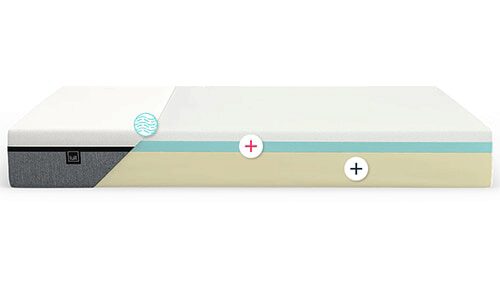
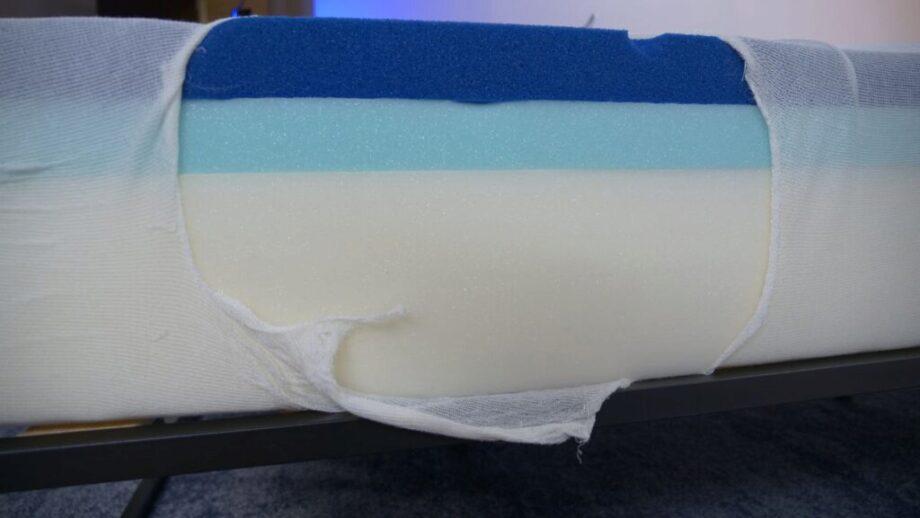
The Lull is a three-layer memory foam mattress that’s a touch firmer than your average bed. Along the top is slow-response memory foam that feels firm at first but gradually softens into light contouring. The Puffy utilizes two layers of memory foam on top of the mattress. The first layer is gel memory foam for cooler sleep, and it has a soft feel that readily cradles pressure points.
The comfort layer of The Lull is firmer, providing the support and body alignment that sleepers need for all-night comfort while Puffy’s transition layer is responsive polyfoam that counteracts the memory foam “quicksand feel,” so you don’t feel stuck.
The final layer of Lull is a durable base foam that ensures outstanding motion isolation and above-average edge support. At 10” thick, Puffy is an all-foam bed that has average longevity and fits on most bed frames.
| Size | Lull Prices | Puffy Prices |
| Twin | $755.00 | $1949.00 |
| Twin XL | $799.00 | $2099.00 |
| Full | $1099.00 | $2249.00 |
| Queen | $1199.00 | $2399.00 |
| King | $1699.00 | $2599.00 |
| California King | $1699.00 | $2599.00 |
For exclusive discounts on both beds see our Lull mattress coupons and Puffy mattress coupons.
Since the Lull and Puffy are both made predominantly with memory foam, we don’t expect either to be the best mattress for hot sleepers. Because there are no coils to facilitate airflow, there’s minimal breathability. The result is a slow accumulation of body heat over the night. However, both beds have cooling innovations, like gel memory foam, that help with temperature regulation.
While we don’t recommend either of these beds if your top priority is staying cool, hot sleepers will likely prefer the Lull. Because you don’t sink as deeply into the top layer of the Lull, more of your body heat can escape along the mattress surface.
Couples often complain about excess motion transfer coming from their mattress. Some mattress materials—like innerspring coils and latex—allow motion to spread across the bed more easily than others—like foam, which dampens motion at the source.
Both the Puffy and Lull provide outstanding motion isolation, which means they’re good mattresses for couples who want better sleep. While both excel in this category, the Puffy slightly outperforms the Lull, thanks to two layers of motion-absorbing memory foam compared to the Lull’s single layer.
You don’t want to roll off your mattress at night or feel like you have to balance when you sit on the edge in the morning. To ensure you’re secure when sitting or lying along the sides of your bed, you need a mattress with reinforced edges.
The Puffy and Lull both have sturdy edges, although they both sink in a bit when you sit along the sides of the bed. The Lull is a touch more comfortable for sitting thanks to a firmer top layer.
Most soft mattress fans love how plush foams melt pressure away from areas like shoulders and hips. The Puffy has softer, more conforming comfort layers that are better suited than the Lull for side sleepers, especially those with joint pain. The Lull’s modest pressure relief is good for lightweight and average-weight back and stomach sleepers, but not side sleepers.
The Lull provides superior spinal support for most stomach sleepers thanks to a firmer surface. By keeping the hips aligned with the shoulders, the Lull minimizes the potential for lower back pain—although heavyweight stomach sleepers should consider a mattress designed for bigger bodies. The Puffy’s softer surface better contours the spine when side sleeping and is superior for back health in side sleepers.
Both mattresses do a great job delivering superb spinal alignment for back sleepers. Opt for the Puffy if you want a bit more contouring or the Lull for a feel that’s akin to sleeping “on” the surface of the mattress.
The Lull is likely to outlast the Puffy by a year or two, but they both have average durability for memory foam mattresses. Lull’s firmer sleeping surface and thicker, high-density base foam layer creates superior longevity.
Free shipping within the continental U.S. with extra fees for Alaska and Hawaii. The Puffy mattress has a 101-night sleep trial and free returns. Simply contact Puffy after a 14-day adjustment period to initiate a return.
For customers who keep the Puffy, you have protection under the Lifetime warranty for as long as you own the mattress.
Free shipping within the continental U.S. with extra fees for Alaska and Hawaii. The Puffy mattress has a 365-night trial and full refunds. You may return your new mattress at any time during the sleep trial. The Lull also has a generous Lifetime warranty covering defects for as long as you own the bed.
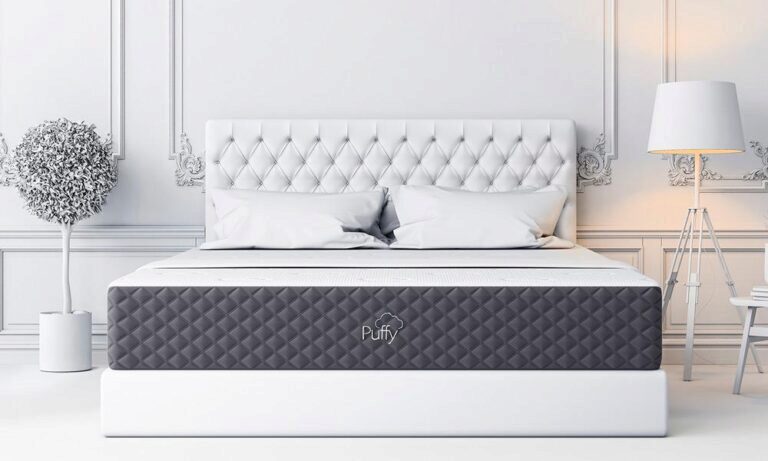
The Puffy Lux has been discontinued, but it was one of Puffy's luxury all-foam mattress models. Instead, check out the Puffy Lux Hybrid, which pairs the same cloud-like comfort foam with a supportive, breathable coil base layer.
We recommend this mattress for the following sleeper types:
Financing options are available for this mattress.

The Puffy Lux has been discontinued, but it was one of Puffy's luxury all-foam mattress models. Instead, check out the Puffy Lux Hybrid, which pairs the same cloud-like comfort foam with a supportive, breathable coil base layer.
We recommend this mattress for the following sleeper types:
Financing options are available for this mattress.

The Puffy Lux has been discontinued, but it was one of Puffy's luxury all-foam mattress models. Instead, check out the Puffy Lux Hybrid, which pairs the same cloud-like comfort foam with a supportive, breathable coil base layer.
We recommend this mattress for the following sleeper types:
Financing options are available for this mattress.
This mattress is no longer available for purchase. To help you find your next mattress, check out our list of the best mattresses available on the market now.
If you need extra pressure relief or love a hugging surface, opt for the Puffy. But if you prefer a firmer mattress where you sleep “on” the surface, we recommend the Lull. Both beds are exceptional for couples and come with risk-free trial periods, although you have over three times longer to try out the Lull. If pricing is important to you, the Lull is slightly lower cost.
No, you should not flip a Lull mattress. The support layer is on the bottom, so if you did flip it, you’d be sleeping on a super-firm surface. If you’re worried about wear, aim to rotate your mattress 180 degrees approximately every six months.
Heavier folks (250 lb and up) also might not find enough support on the Lull, because its all-foam construction isn’t exceptionally sturdy. It also doesn’t have great edge support, so larger folks won’t be able to utilize the full surface of the mattress.
Considering its materials and all-foam construction, the Puffy should be a reasonably durable mattress. Its longevity will, of course, depend on how often it is used and how heavy the sleeper is, but it should last for at least 5 to 7 years.